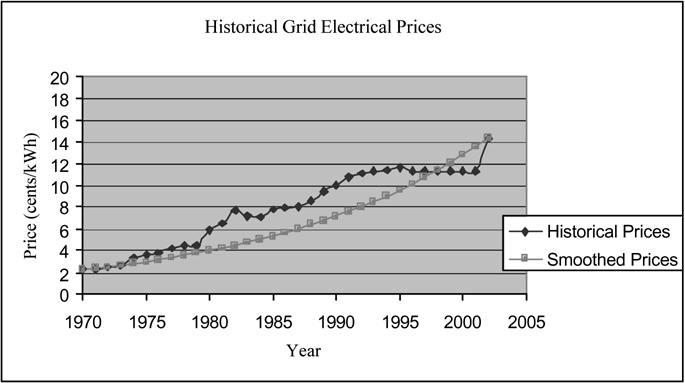Solar 101 – Solar Electric Systems
How It Works
AAES Solar Power systems consist of an array of solar electric panels, an inverter and a computerized solid-state controller. The solar electric panels generate DC electricity directly from sunlight. The inverter coverts the DC electricity produced by the panels to AC electricity. The computerized controller regulates the system and directs your extra power back to the utility grid. In applications where you are not connected to the grid or you want backup power, batteries are required.
What Size Solar System Do I Need?
AAES Solar Power systems require approximately 100 sq. ft. of panel area to generate 1 kW of electrcity. An average 2,500 sq. ft. single-family home uses about 5,000 kilowatt hours of electricity per year. A 3 kW (AC) system will generate nearly all of the electricity required for such a home on an annual basis. The BP Solar panels used in our power systems have a 40 year design life, and come with a 25 year warranty.
Distributed Generation
Solar electric power systems are clean, silent, and have no moving parts. In utility interconnected applications, they reduce the need to move power over aging transmission lines. Producing solar electric power at, or near, where it is used and sending the excess power into the grid from thousands of decentralized points, is helping us to change the way power is produced and distributed.
The Installation Process, and Getting Your Rebate
Requesting a Free Site-Visit
Ater reviewing the information presented in this package, if you own your home and you are interested in learning more about solar electric power systems call AAES. We will answer any questions you might have and arrange to schedule a free site visit.
California Solar Initiative Rebate
Upon signing a sales agreement and receiving a deposit on your Solar Power system, AAES will submit a rebate reservation for you. Once the California Solar Initiative (CSI) approved utility receives an application for an eligible system, they will send you a claim form showing the rebate dollar amount reserved in your name. After your system has been permitted, installed, and is operational, the claim form and your final inspection approval will be submitted to the CEC for payment. Within 30 to 60 days, the CEC will mail your rebate check. This CEC rebate program is scheduled to be phased out over the next few years.
Federal Investment Tax Credit
Solar electric systems are exempt from property tax in California. You increase the value of your property without being assessed for that improvement. Qualifying systems need to be certified by the CSI and installed with a minimum five year warranty. AAES offers a 10 year warranty. There is currently a Federal Tax credit of 30% of the net system cost or a maximum of $2,000.00 whichever is larger for residential systems Commercial systems qualify for the full 30% credit. AAES utilizes California Energy Commission (CEC) certified components in our AAES power systems which also comply with the National Electrical Codes (NEC).
California offered a 7.5% state tax credit for solar electric systems. This state tax credit ended on December 31, 2005. If you think this tax credit should be reinstated, contact your government representatives and let them know…
Solar Economics 101
System Cost
AAES Solar Power systems cost between $8-10 per watt installed, including sales tax. The exact system cost will depend upon the ease of the installation and roof access. A 3 kilowatt system that would power a typical California residence with good southern exposure will cost between $24,000 and $30,000.
California State Cash Rebate
The California Energy Commission is presently offering a $1,000 per kilowatt cash rebate for solar electric systems that are connected to the utility grid. This is not a tax credit, this is a cash rebate.
Net Metering
Net Metering measures the difference between the electricity you buy from the utility and the electricity you generate with your solar electric system. When you are making more electricity than you are using, like typical summer days, your extra electricity automatically gets metered back out (sold) to the utility grid. You recieve credit for this power at the same rate they sell it to you. Net Metering allows you to use the electric utility grid like a bank account. You can put electricity into it that you don’t use immediately and you can withdraw the same amount later on at no net cost to you.
The Cost of Electricity in California – The Penalty Zones
 During the California energy crisis, the utility companies adopted a complex tiered electric rate structure. While ‘baseline’ quantities vary in California from region to region (California is divided into approximately16 different ‘baseline’ climate zones), the baseline range for residential customers in the PG&E service area is between 300-350 kWh per month, which is approximately 60% of the average monthly use in the S.F. Bay Area. The baseline rate is the lowest available rate. In the region served by PG&E, the residential baseline rate is approximately 12.5 cents per kWh in 2004. Residential customers who exceed their baseline quantities face steep penalty rates.
During the California energy crisis, the utility companies adopted a complex tiered electric rate structure. While ‘baseline’ quantities vary in California from region to region (California is divided into approximately16 different ‘baseline’ climate zones), the baseline range for residential customers in the PG&E service area is between 300-350 kWh per month, which is approximately 60% of the average monthly use in the S.F. Bay Area. The baseline rate is the lowest available rate. In the region served by PG&E, the residential baseline rate is approximately 12.5 cents per kWh in 2004. Residential customers who exceed their baseline quantities face steep penalty rates.
| Tier # | Percent of Baseline | Price |
|---|---|---|
| Tier 1 | Up to the baseline amount | $0.115/kWh |
| Tier 2 | Electric Usage from 101% to 130% | $0.13/kWh |
| Tier 3 | Electric Usage from 131% to 200% | $0.22/kWh |
| Tier 4 | Electric Usage from 201% to 300% | $0.30/kWh |
| Tier 5 | Electric Use exceeding 300% | $0.37/kWh |
Rate of Inflation in California
The Really Big Savings
The biggest savings from installing a solar electric system will be realized in future years. The graph below is based upon rate data from the California Public Utility Commission. As you can see, average electric rates have increased from approximately 2 cents per kilowatt hour in 1970 to approximately 15 cents per kilowatt hour in 2001. That is an average rate of increase of approximately 7% per year.

Financing An AAES Power System
If you are interested in financing an AAES Solar Power system, below is the cost benefit analysis on financing a 3-kilowatt system that would power a typical California home. Call AAES for details on financing.
| PV System (kW-AC) | 3kW |
|---|---|
| Installed Cost (estimated) | $29,970 |
| CSI Rebate ($1.90/Watt) | $5,600 |
| Net Cost After Rebate | $24,370 |
| Monthly Payment on a financed system | $121 |
| Monthly Payment after interest tax deduction | $99 |
| Monthly Payment to PG&E for same number of kWh(3) | $184 |
| Fed Tax Credit (30% of ‘net-cost’ commercial or $2,000 ) | $184 |
- Actual price will depend upon cost of installation and type of panel mount.
- Financed with an 7% fixed rate mortgage loan with a 30 year term.
- Assumes that homeowner is paying an average rate of 16 cents per kWh. This homeowner is barely in the penalty zone.
As shown above, the monthly payments on a typical 3.0 kW system that is financed with a tax-deductible home loan are about the same as the payments to the utility company. However, this homeowner will receive a tax credit at the end of the year for an additional $2,000. That is like getting over 3 years of free electricity and then locking-in low rates for 27 more years. Further, if the home-owner is using more than 100% of their baseline consumption rate, the electric rate will be much higher and solar electric system will be much more cost effective. (The table which appears in the color brochure is based on a smaller size Solar Power system, therefore the numbers are slightly lower).
Cost Savings Analysis
Cost Savings Analysis
| Time Period | Monthly Utility Bill | Monthly Solar Loan Payment | Savings |
|---|---|---|---|
| In 5 years | $94 | $87 | $7 |
| In 10 years | $125 | $91 | $35 |
| In 5 years | $168 | $97 | $92 |
| In 5 years | $225 | $105 | $121 |
The table above shows the savings over the years and the cumulative savings over the 30 year life of the system, assuming a 7% per year increase in electric rates. As you can see, the system pays for itself many times over and the cumulative savings are enormous!
While monthly payments on a solar electric power system might be about equal to the monthly electric bill today, as electric rates increase, which is inevitable, the greatest benefit of a solar electric system emerges. Solar allows homeowners to lock-in low rates for 30 years. If rates increase as they have historically, the price of electricity from the utility in 30 years will be over a dollar per kilowatt hour!
Pending natural gas shortages are likely to push electric rates higher in the near future. Nintey seven percent of all new power plants to come online in the past 3 years in the U.S. use natural gas. The overall demand for natural gas has increased over 10% during that time. On June 26, 2003 the Secretary of Energy convened a special Gas Summit meeting to, “address the urgent issues facing the natural gas market to avert a crisis.”
The Bottom Line
For this typical larger home, the homeowner would not spend any cash upfront to pay for the system, would save almost $40,000 in their after-tax monthly payments over the life of the system and would get a tax benefit in the first year equal to $2,000. Solar Power is one of the best investments you will ever make.
Complete Solar Energy System Design Consulting & Installation
Add value to your home or business, lower your energy costs and significantly reduce your carbon emissions. Take the first step toward energy independence. We will answer any questions you might have and arrange to schedule a free site evaluation…




